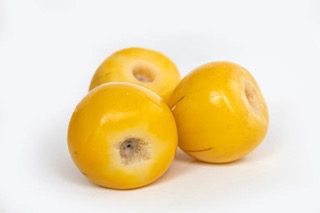

While the flesh of Nance fruit is safe for dogs to consume, the seeds can pose a serious health risk. Large amounts of seeds can cause intestinal blockage, preventing digested food and liquids from passing through.
Nance fruit is a great source of dietary fiber, which promotes digestive health. It is also high in vitamin C, boosting the immune system.
The pits of Nance fruit can be a choking hazard and cause intestinal obstruction if swallowed in large amounts. While Nance fruit is not known to be toxic to dogs, there have been no direct studies on its suitability for canine consumption.
When feeding Nance fruit to dogs, it is important to remove all seeds and only offer small amounts as a treat. As with any new food, it is recommended to introduce it gradually and monitor for any adverse reactions.
Nance fruit, also known as Byrsonima crassifolia, is a small yellow fruit that originates from Central and South America, but can also be found in the Caribbean and Florida. It is also known as savanna serrette, craboo or muruci in various regions. While the flesh of Nance fruit is safe for dogs and can provide beneficial dietary fiber and vitamin C, the pits of the fruit can be a choking hazard and cause intestinal obstruction if swallowed in large amounts. It is important to remove all seeds before feeding Nance fruit to dogs and introduce it gradually as a treat.
If Nance fruit is not easily accessible or affordable, two alternatives that provide similar benefits for dogs are strawberries and blueberries. Like Nance fruit, these fruits are high in vitamin C and dietary fiber and can be offered as small treats.
Have you ever fed Nance fruit to your dog before? Did they enjoy it? It is always important to monitor your pet for any adverse reactions when introducing new foods into their diet. As always, consult with your veterinarian before making any significant changes to your pet's diet.
Remember to always prioritize your dog's health and safety, and give them lots of love and attention.